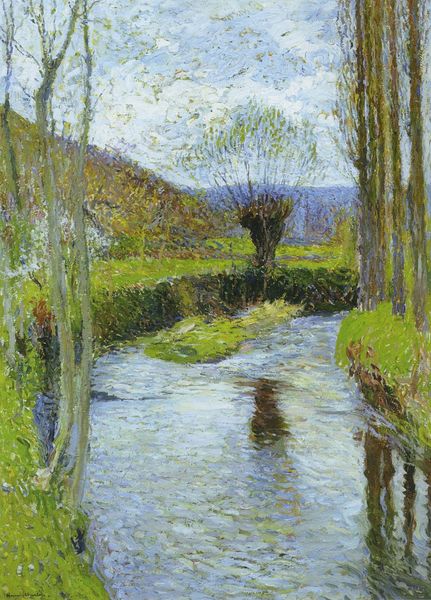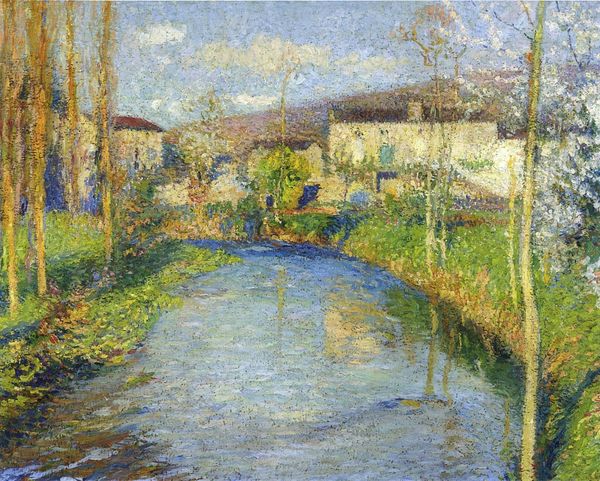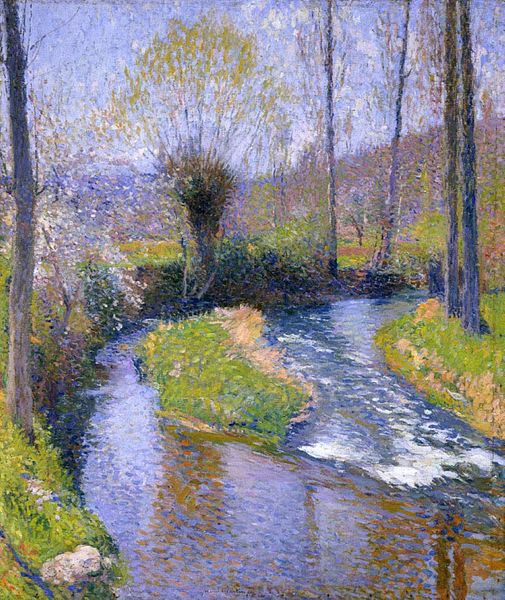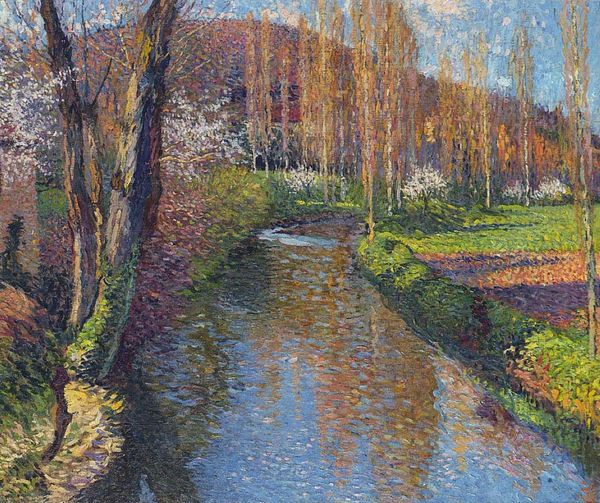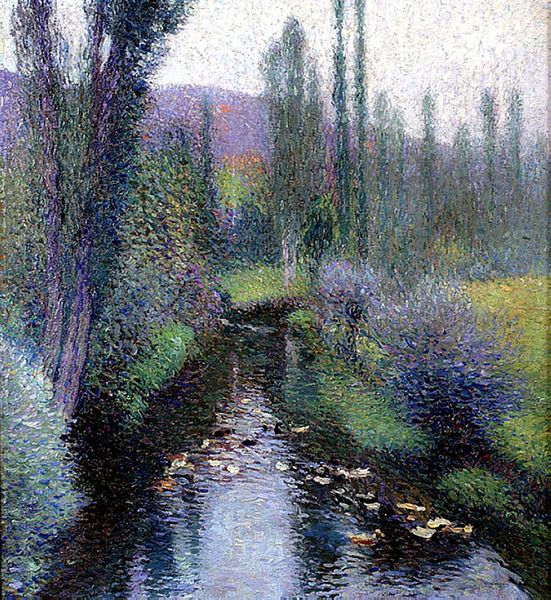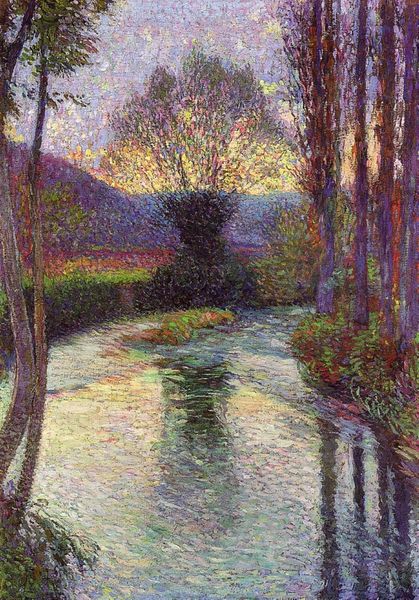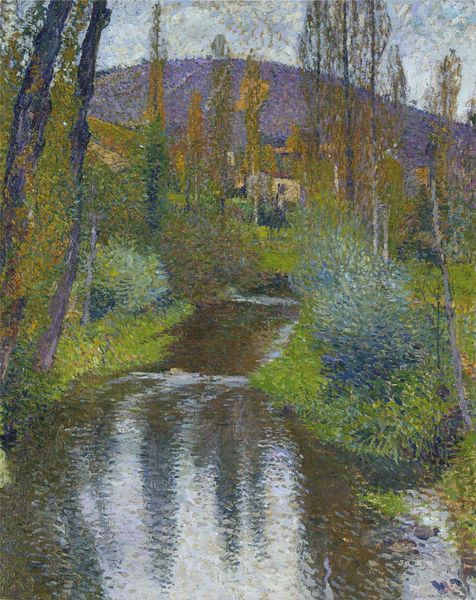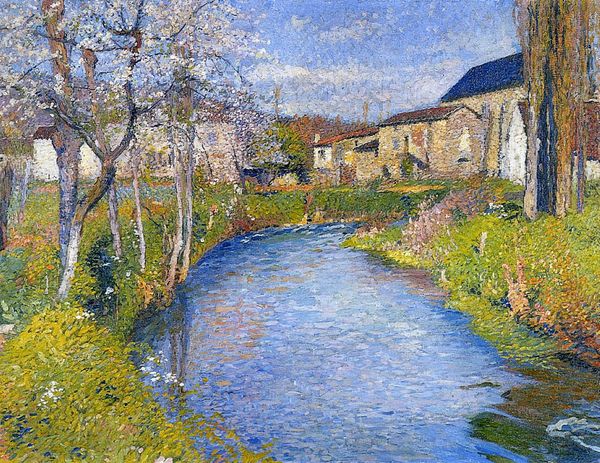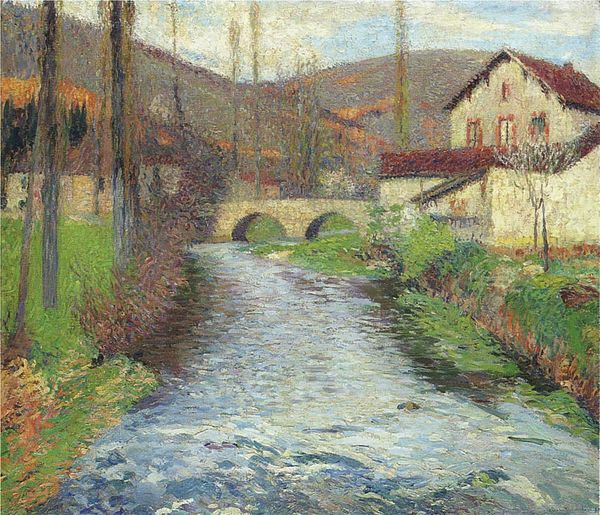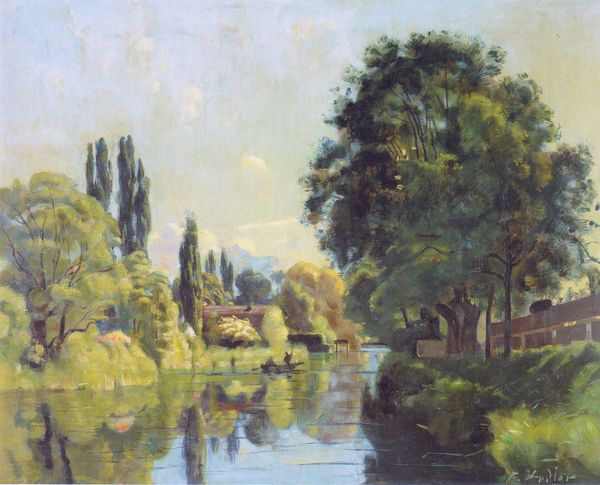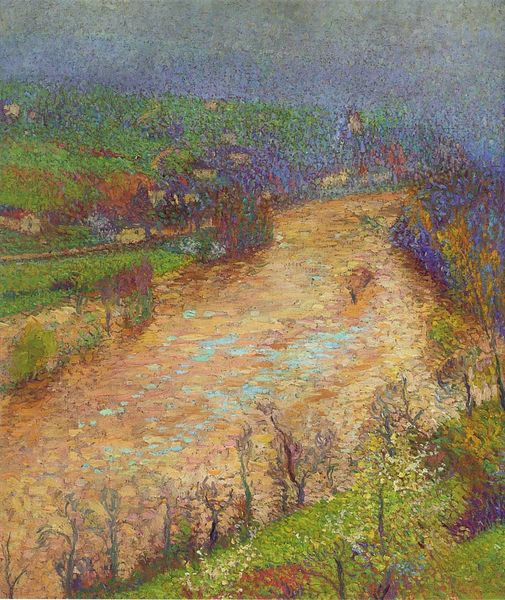
Copyright: Public domain
Editor: So, here we have Henri Martin's "The Willow," painted around 1910, made with oil paint. It gives me a tranquil feeling, almost like looking at a postcard. I'm curious, what do you see in this piece? Curator: Beyond its picturesque surface, I see a focus on the materiality of paint itself and the social implications of landscape depiction. Martin employs impasto, building up the paint surface to create a tactile experience for the viewer. How does the impasto and plein-air application impact the sense of place? Is this landscape as perceived from observation of the outside or an internalization of external observations back in the studio. Editor: Well, the texture does make it feel more real, more tangible. So, by focusing on the painting process, he's grounding this 'romantic' scene in reality, isn’t he? How do you mean in terms of the social context for plein-air painting? Curator: Exactly. By showcasing the labor involved in creating the artwork, it pushes back against idealized representations of nature. It's about consumption, or even 'extraction', I might even call it: an commodification of the nature depicted on view. A painter consumes an outdoor site and attempts to bring it home to a more financially beneficial marketplace as a canvas. What could an historical context of colonialism reveal, for example? And plein-air becomes not just about depicting but appropriating landscapes. It compels a question; to whom does land belong? Editor: That’s… that’s a completely different way of looking at landscape paintings. It's interesting how focusing on the materiality opens up questions about labor and ownership, too. Curator: Precisely. By examining the "means of production", even in something seemingly straightforward as a landscape, we reveal layers of meaning regarding nature, labor, class, and cultural context. It encourages one to question conventional values in favour of alternative modes of thought by use of physical substance. Editor: I’ll definitely look at landscape paintings differently now. I appreciate your unique materialist insights that has certainly changed my understanding of landscape painting! Curator: My pleasure. And thinking through these different ideas together encourages new approaches to historical paintings of diverse nature in the landscape genre.
Comments
No comments
Be the first to comment and join the conversation on the ultimate creative platform.
